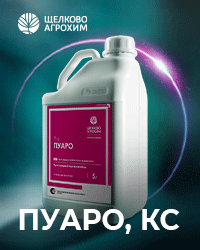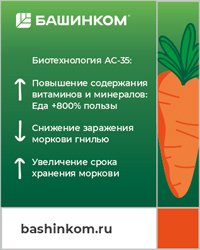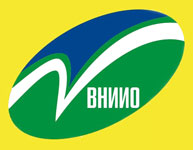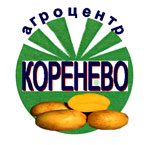UDC 58.006:665.52: 632.951:634.667:632.7.04/08:595.731
https://doi.org/10.25630/PAV.2025.99.14.001
Tkachenko K.G., Varfolomeeva E.A.
The last few decades have seen a search for ways to use secondary plant metabolites, the components of which have not only insecticidal but also repellent effects. The present work is devoted to the development of a method for using a mixture of Neem fatty oil obtained from the leaves of Azadirachta indica L. (family Meliaceae) and various essential oils – Litsea cubeba Pers. and Cinnamomum verum J.Presl. (Lauraceae), Cymbopogon flexuosus Stapf. (Poaceae), Juniperus oxycedrus L. (Cupressaceae), Syzygium aromaticum (L.) Merr. & Perry or Eugenia caryophyllata Spreng. (Myrtaceae), Rosmarinus officinalis L. (Lamiaceae), Achillea millefolium L. (Asteraceae), Acorus calamus L. (Acoraceae), for use in the greenhouses of the Peter the Great Botanical Garden BIN RAS against the western flower thrips Frankliniella occidentalis Pergande, 1895 (Thysanoptera, Thripidae). Experimental working solutions of a mixture of neem fatty oil with essential oils were prepared at the rate of 80 ml of oil per 10 l of water. Polysorbate 80 (Tween 80) was used as an emulsifier at the rate of 10-15 ml per 10 l of water. Essential oils were used at a concentration of 5 ml per 10 l of water. Plants were treated with a hand sprayer. Ten flowers for each of three specimens of one plant species were taken for the experiment. The treatments were carried out at an air temperature of 12–16 °C with a humidity of 85%. The consumption of the working fluid was 600 l/ha. As a result of the treatments, it was shown that the duration of the protective effect from the use of a complex of oils ranged from 14 to 21 days. The most effective were mixtures of Neem fatty oil with essential oils of Litsea cubeba, Cinnamomum verum and Cymbopogon flexuosus plants. The decrease in the number of offspring of the western flower thrips averaged from 12 to 25% compared to the control.
Key words: Azadirachta indica, Frankliniella occidentalis, Litsea cubeba, Cymbopogon flexuosus, Juniperus oxycedrus, Cinnamomum verum, Eugenia caryophyllata, Rosmarinus officinalis, Achillea millefolium, Acorus calamus
Tkachenko K.G., D.Sci (Biol.), senior research fellow with the assignment of duties of the head of the seed science laboratory of the Peter the Great Botanical Garden of the V.L. Komarov Botanical Institute of the Russian Academy of Sciences. Tel.: +7 (911) 961-21-91. E-mail: Ktkachenko@binran.ru
Varfolomeeva E.A., senior research fellow, head of the Plant Protection Group of the Peter the Great Botanical Garden of the V.L. Komarov Botanical Institute of the Russian Academy of Sciences. E-mail: varfolomeeva.elizaveta@list.ru
- Varfolomeeva E.A., Tkachenko K.G. Phytophagous insects in the collection of open-ground plants of the Peter the Great Botanical Garden. Bulletin of the Botanical Garden Institute of the Far Eastern Branch of the Russian Academy of Sciences, 2019. Issue 22. Pp. 44–55. doi: 10.17581/bbgi2205 (In Russ.).
- Nakahara S. Annotated list of the Frankliniella species of the world (Thysanoptera: Thripidae). Contributions on Entomology, International. 1997. Vol. 2. No4. Pp. 355—389.
- William D. J. K., Terry L. I. The spread of the western flower thrips Frankliniella occidentalis (Pergande). Agricultural and Forest Entomology. 2003. Vol. 5. No4. Pp. 301–310. doi:10.1046/j.1461-9563.2003.00192.x.
- Izhevsky S.S. Western flower thrips. Plant protection and quarantine. 1996. No2. Pp. 34–35 (In Russ.).
- Varfolomeeva E.A., Tkachenko K.G. Phytophagous insects in the open-ground plant collection of the Peter the Great Botanical Garden. Bulletin of the Botanical Garden-Institute of the Far Eastern Branch of the Russian Academy of Sciences, 2019. Issue 22. Pp. 44–55. doi: 10.17581/bbgi2205
- Tkachenko K. and Varfolomeeva E. Prospects for the Use of Essential Oils as Repellants and/or Insecticides. Trop. J. Nat. Prod. Res. 2022; 6(6): Pp. 831–835 http://www.doi.org/10.26538/tjnpr/v6i6.1
- Experience with Combinations of Fatty Oil and Essential Oil Mixtures against Trialeurodes vaporariorum Westw. in the Peter the Great Botanical Garden. K.G. Tkachenko, E.A. Varfolomeeva, W.M. Hikal, A.A. Mahmoud, S. Smaoui, M. Kačániová, H.A.H. Said-Al Ahl. Int. J. Adv. Multidisc. Res. Stud. (International Journal of Advanced Multidisciplinary Research and Studies) 2023. Vol. 3. No6. Pp. 527–535.
- Wylie MR, Merrell DS. The Antimicrobial Potential of the Neem Tree Azadirachta indica. Front Pharmacol. 2022 May 30; 13:891535. doi: 10.3389/fphar.2022.891535. PMID: 35712721; PMCID: PMC9195866.
- Studying the Antioxidant and the Antimicrobial Activities of Leaf Successive Extracts Compared to the Green-Chemically Synthesized Silver Nanoparticles and the Crude Aqueous Extract from Azadirachta indica. M. Ahmed, D.A. Marrez, N. Mohamed Abdelmoeen, E. Abdelmoneem Mahmoud, MA-S Ali, K. Decsi, Z. Tóth. Processes. 2023. 11(6). Pp. 1644. https://doi.org/10.3390/pr11061644
- Stepanycheva E.A., Petrova M.O., Chermenskaya T.D. Essential oils of the plant for reducing the number of whitefly Trialeurodes vaporariorum West // Development of the agro-industrial complex based on modern scientific achievements and digital technologies. Saint Petersburg – Pushkin. 2019. Pp. 79–81 (In Russ.).
- The effect of volatile substances of essential oils on the behavior of the Western flower thrips Frankliniella occidentalis Perg. (Thysanoptera, Thripidae) / E.A. Stepanycheva, M.O. Petrova, T.D. Chermenskaya, R. Pavela // Entomological review. 2018. Vol. 97. No4. Pp. 640–648 (In Russ.).
- Isman M.B. Plant essential oils for pest and disease management. Crop Protection. 2000. 19 (8): Pp. 603–608.
- Essential oils as green pesticides for sustainable agriculture. M. Mohan, S.Z. Haider, H.C. Andola, V.K. Purohit Research Journal of Pharmaceutical, Biological and Chemical Sciences. 2011. 2 (4). Pp. 100–106.
- Abdel-Tawab H.M. Green pesticides: essential oils as biopesticides in insect-pest management. Journal of Environmental Science and Technology. 2016. 9. Pp. 354–378.
- Essential oils as prospective fumigants against Tetranychusurticae Koch. R. Pavela, E. Stepanycheva, A. Shchenikova, T. Chermenskaya, M. Petrova. Industrial Crops and Products. 2016. 94. Pp. 755–761.
- Dospekhov B.A. Methodology of field experience. Moscow, 1985. 351 p. (In Russ.).
PDF(Rus)
For citing: Tkachenko K.G., Varfolomeeva E.A. A mixture of fatty and essential plant oils to control flower thrips in greenhouses. Potato and vegetables. 2025. No2. Pp. 26-29. https://doi.org/10.25630/PAV.2025.99.14.001 (In Russ.).


















